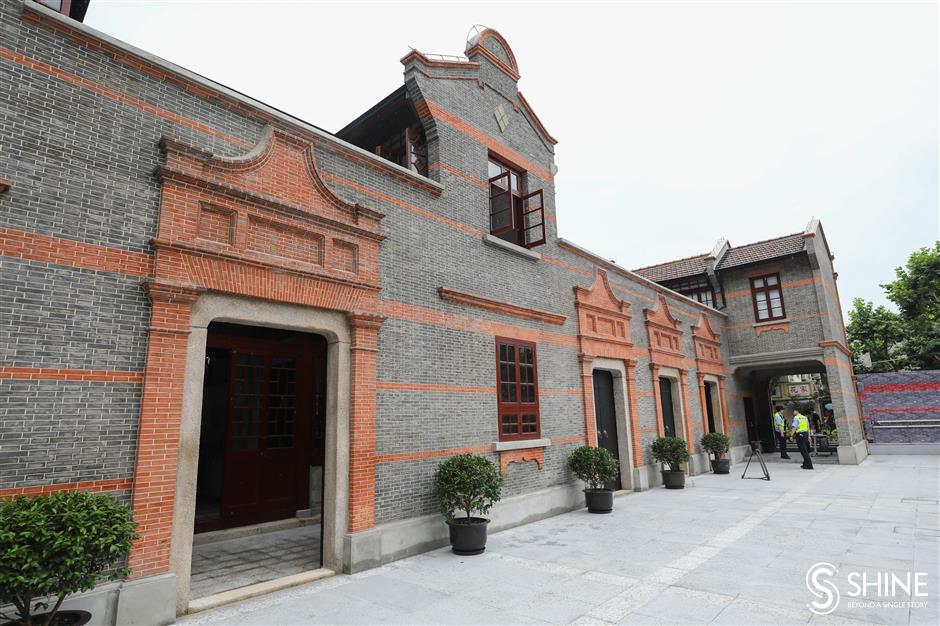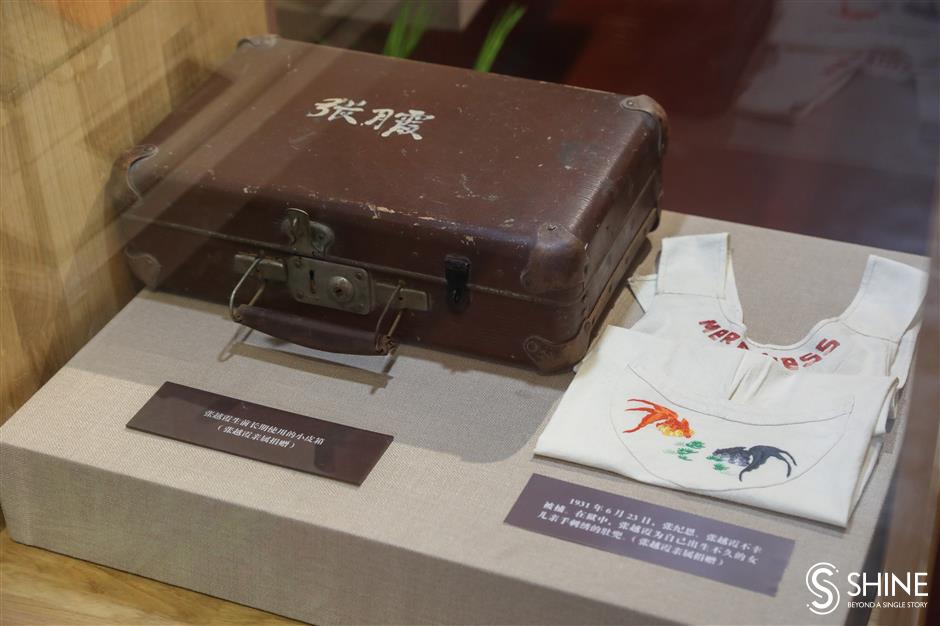
Former site of the Secretariat of the CPC Central Committee.
 Jiang Xiaowei / SHINE
Jiang Xiaowei / SHINEA dudou sewed by Zhang Yuexia to her daughter, and a suitcase she used.
A century-oldshikumen(stone-gate) building used by the Communist Party of China to read and store classified documents in the early days opened to the public on Thursday as a "red" museum.
After temporary move toWuhan, the Party's Central Committee moved back to Shanghai in September 1927. Finding it unsafe for individuals to keep documents, PremierZhouEnlaisuggested finding a place to serve as secretariat.
At his request,ZhangWeiyirented a two-floored building atNo. 10 Lane, 673JiangningRoad. Until mid-1931, Party leaders came to read and review important documents, as well as attend secret meetings.
There, everyone lived a double life and risked their lives in clandestine activities.
Initially,Zhanglived under a false identity asa woodwarebusinessman with a "son" and "daughter-in-law."
When the building was piled with documents,ZhoutoldZhangto transfer the stash to another place for safety. Since then, documents were stored and read in two separate places.
In early 1931,ZhangJi'en, under the pseudonym HuangJici, took over the job.
He lived with his wifeZhangYuexiaon the first floor.QiuAizhen, also known asZhouXiuqing, pretended to be their servant and lived in thetingzijian, or garret. The office on the second floor was decorated as single room, furnished with bed, closet and table.
On June 23, 1931, police raided the house, found nothing but arrested the couple anyway.Zhang'swife was soon released but he was sentenced to five years in jail.
DengYingchao, wife of China's first PremierZhouEnlai, recalled that she had come by appointment to have dinner, but the missing flowerpot on the garret's windowsill suggested the exposure of the spot. So, she immediately visited another comrade.
As years passed, the site gradually became unknown. In 1982,ZhangJi'en and hiscoworkerHuangJieranwere asked to identify the site. They visited several similar buildings in the surrounding area. When Huang climbed staircases on one building, he touched the handrail and said: "Yes. I could feel it. It looked and felt the same as past." Later,Zhangalso confirmed it was exactly the place they were looking for.
In December 2017, the site was granted protected status. Since February 2018, workers have been visiting Party history experts and collecting exhibits from Beijing to Taiwan to Russia.
The building has been repaired to its original look as it was about a century ago. The rooms where these early Party members lived have beenreenactedto scenes when they were living.
Highlights of exhibits include adudou, a traditional Chinese form of bodice, sewn byZhangYuexiafor her little daughter when she was in detention, and furniture used by the couple.
The museum opens from 9am to 4pm from Tuesday to Sunday.
 Jiang Xiaowei / SHINE
Jiang Xiaowei / SHINEZhang Ji'en and Zhang Yuexia's bedroom.
